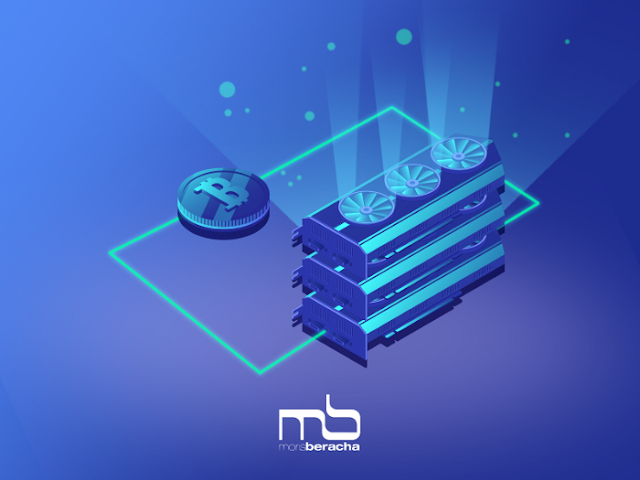Amazon Managed Blockchain hits general availability
By Seth Colaner
Amazon is in the blockchain business in a big way. Its Amazon Managed Blockchain
is a fully managed service designed to help companies quickly set up
blockchain networks of their own that are scalable and easy to create
and manage. Originally announced at the company’s re:Invent event in
late 2018, Amazon Managed Blockchain has been in preview for months.
It’s now generally available, arriving first in northern Virginia before
expanding to other regions over the course of the next year.
In a press release,
Amazon told businesses that they “can quickly set up a blockchain
network spanning multiple AWS accounts with a few clicks in the AWS
Management Console,” doing away with what it describes as the typical
cost and difficulty of creating a company network. AMB supports two
frameworks — your business’ choice of Ethereum or Hyperledger Fabric.
The former is the fruit of the combined labors of IBM and the Linux
Foundation — part of the Hyperledger Project, which in turn is part of IBM Blockchain,
a performance-as-a-service offering. Notably, Ethereum isn’t actually
supported yet, but that’s also scheduled for later in the year.
Amazon is in the blockchain business in a big way. Its Amazon Managed Blockchain
is a fully managed service designed to help companies quickly set up
blockchain networks of their own that are scalable and easy to create
and manage. Originally announced at the company’s re:Invent event in
late 2018, Amazon Managed Blockchain has been in preview for months.
It’s now generally available, arriving first in northern Virginia before
expanding to other regions over the course of the next year.
In a press release, Amazon told businesses that they “can quickly set up a blockchain network spanning multiple AWS accounts with a few clicks in the AWS Management Console,” doing away with what it describes as the typical cost and difficulty of creating a company network. AMB supports two frameworks — your business’ choice of Ethereum or Hyperledger Fabric. The former is the fruit of the combined labors of IBM and the Linux Foundation — part of the Hyperledger Project, which in turn is part of IBM Blockchain, a performance-as-a-service offering. Notably, Ethereum isn’t actually supported yet, but that’s also scheduled for later in the year.
In a press release, Amazon told businesses that they “can quickly set up a blockchain network spanning multiple AWS accounts with a few clicks in the AWS Management Console,” doing away with what it describes as the typical cost and difficulty of creating a company network. AMB supports two frameworks — your business’ choice of Ethereum or Hyperledger Fabric. The former is the fruit of the combined labors of IBM and the Linux Foundation — part of the Hyperledger Project, which in turn is part of IBM Blockchain, a performance-as-a-service offering. Notably, Ethereum isn’t actually supported yet, but that’s also scheduled for later in the year.
In an email interview, an Amazon representative did not explain why
Ethereum isn’t yet available, and he didn’t clarify when it would be,
other than to repeat the press release’s “later this year” line. He did,
however, delineate the respective advantages of Hyperledger Fabric
versus Ethereum.
“Hyperledger Fabric is well-suited for applications that require
stringent privacy and permission controls with a known set of members,”
he said, using the example of a financial application in which sensitive
information is shared only with select banks. He contrasted that with
Ethereum’s use for situations where transparency for all members is key
and a blockchain network needs to be highly distributed. “[An example
would be] a customer loyalty blockchain network that allows any retailer
in the network to independently verify a user’s activity across all
members to redeem benefits.
Alternatively, Ethereum can also be used for
joining a public Ethereum blockchain network,” he said.
“Customers simply choose their preferred framework, […] add network
members, and configure the member nodes that process transaction
requests. Amazon Managed Blockchain takes care of the rest, creating a
blockchain network that can span multiple AWS accounts and configuring
the software, security, and network settings,” Amazon’s press release
reads.
The company said that AMB supports thousands of applications running
millions of transactions. Amazon also provides its AMB customers with
the Amazon Quantum Ledger Database (QLDB) for when companies want to
perform additional analysis.
Blockchain is often erroneously conflated with cryptocurrency. The
association between the two is indeed close, but that’s because
blockchain is the technology that allows crypto to function. On stage at
the initial re:Invent announcement, an Amazon spokesperson said that
before the company embarked on its AMB journey, Amazon had more closely
examined what sort of business use cases businesses wanted from the
technology. Amazon Managed Blockchain’s services and feature set is what
emerged from those efforts.
An inherent tension seems to exist between the decentralized promise
of blockchain and the — for lack of a better term — centralized nature
of Amazon’s fully managed service. But an Amazon representative
explained to VentureBeat via an email interview the various ways
individuals maintain control.
“Each customer owns their own membership and has a copy of the data
and has the ability to endorse a transaction (or not),” the
representative said. “This gives all members in a network the ability to
make decisions, achieve consensus, and have ownership.” He pointed out
that what Amazon brings to the table is an assurance that applications
“will be highly available, scalable, and fault tolerant.” He continued,
“This allows customers to build enterprise-grade applications that
leverage key properties of a blockchain on top of AWS’ industry-leading
cloud infrastructure.”
The membership drives scalability, up or down, and it gives the
network some internal efficiency. “Consortiums can form without specific
owners and all members need to decide who can join or be removed. This
again ties into decentralization for enterprise applications,” he said.
He used the example of trade chain that requires numerous parties across
international boundaries. “Each stakeholder wants to independently
verify the documentation related to the trade and doesn’t want any
single entity to own the record of activity,” he said. “The current
process requires trade-related paperwork (for example, a letter of
credit) to go back and forth between the stakeholders, which can take
five to 10 business days to complete.”
But on a blockchain, each member in the trade process has a copy of
the transaction ledger, and this is where smart contracts — enabled by
blockchain technology — can smooth the process. “The business contract,
such as a letter of credit, can be written as a smart contract in the
blockchain application and can automatically execute as soon as all the
parties provide a consensus to record the transaction,” he said.
There’s still no word on a timeline for further service rollouts, but pricing information is available on the Amazon Managed Blockchain page.




Comentarios
Publicar un comentario